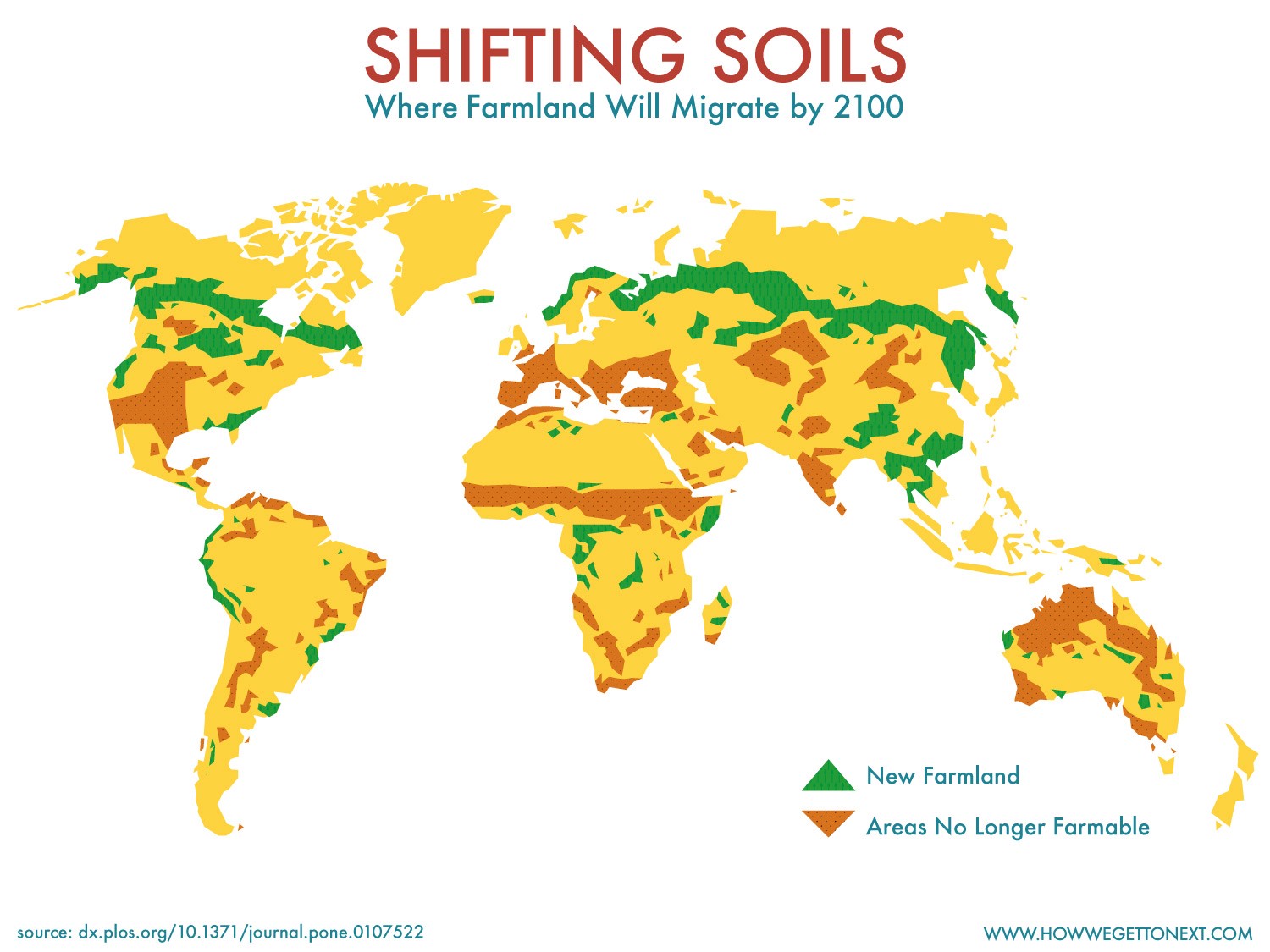
Climatologists prefer the term “climate change” to “global warming” because its effects aren’t just limited to temperature. Rainfall, wind patterns, and many other weather factors will also change dramatically around the world over the coming century if emissions aren’t controlled–and fast.
With two thirds of the global population expected to live in urban areas by 2030, it’s no surprise that the bulk of climate attention focuses on its impact on cities. But those people need to be fed, and changes in temperature and rainfall are bad news for farmers in many countries. They’ll find their soils no longer able to support life without major new irrigation projects that will increase pressure on already-stressed groundwater reserves.
However, there are upsides for parts of the world, where vast new agricultural belts that don’t exist today will open up. On balance, according to the best climate change projections we have, we’ll end up with more cropland than we have today–but lower harvest rates because the land won’t be as fertile.
We’ve put together the map above to illustrate where new breadbaskets will arise by the end of the century, and where farmland will become a thing of the past. It’s based on the work of a team led by Wolfram Mauser at Munich’s Ludwig-Maximilian’s University in 2014.
Florian Zabel, who worked on the research project, said: “In the context of current projections, which predict that the demand for food will double by the year 2050 as the result of population increase, our results are quite alarming.”


How We Get To Next was a magazine that explored the future of science, technology, and culture from 2014 to 2019. This article is part of our The Future of Food section, which covers new innovations changing everything from farming to cooking. Click the logo to read more.
